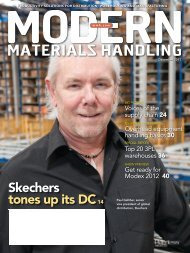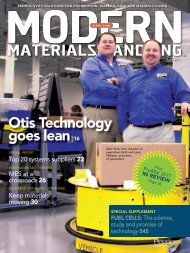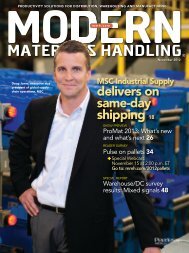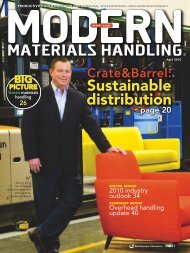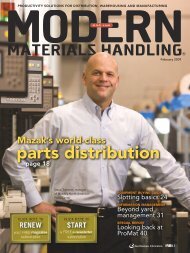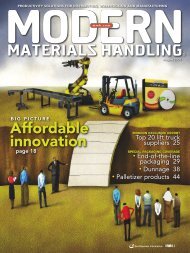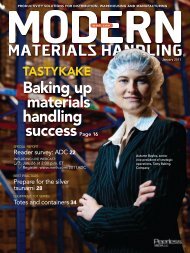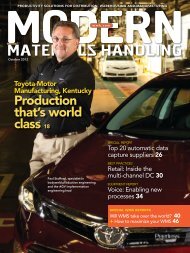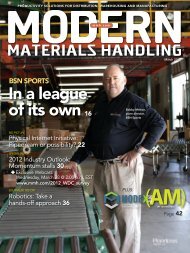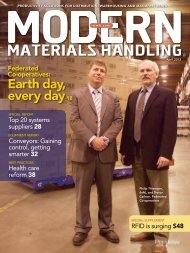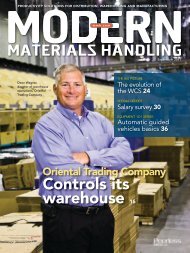You also want an ePaper? Increase the reach of your titles
YUMPU automatically turns print PDFs into web optimized ePapers that Google loves.
volumes are trending down. He alsosaid that this data does not fully explainwhat is happening with exportson a real-time basis.While July exports were up 11%annually according to Departmentof Commerce data, Gruenes saidit does appear that the economicweakness in Europe and the mildslowdown in Asia are impactingthe United States’ ability to exportproduct.“ The combination ofthe two is somewhattoxic. While 40% saidthey think the economywill get worse, 53% feelpretty good about theirown business.”—Wally Gruenes, manufacturingpractice leader, Grant Thornton“It does appear to be driven bythe morass in Washington and theEurozone and less volume,” he said.“The combination of the two is somewhattoxic. While 40% said they thinkthe economy will get worse, 53% feelpretty good about their own business.So the environment is not great,but some feel better about their ownbusiness rather than the economy ingeneral, which is consistent in thisdata going back to February.”Along with the declines reportedin the Grant Thornton data areconcurrent declines in the Institutefor Supply Management’s monthlyManufacturing Report on Business.Another thing to note is that the U.S.manufacturing base is significantlysmaller than it was in the 1980s andhas been in a three-decade span ofdecline, and has seen 2 million to 3million jobs lost—and not regained—since the recession began in 2008.But even with the loss of jobs andshrinking domestic manufacturingbase, Gruenes said that according toNAM data, the U.S. manufacturingeconomy still does account for 21%of the value of manufactured materialsthat are produced compared toJapan and China, which are at 14%and 13%, respectively.“There is still a significant levelof manufacturing performed in thiscountry, but some of the challengeswe have seen, with the concept ofnear-shoring to Mexico and pointssouth, as well as China and Vietnam,we think the long-term trend is goingto be bringing production backcloser to home,” said Gruenes. “Andthe megatrend is that supply chainsare going to be shortened from aphysical perspective.”This approach brings manufacturerscloser to their customers andsuppliers closer to manufacturers,raising the question of manufacturersasking if the costs of transportingthe product from the other side ofthe world—as fuel and transportationcosts increase—are offset by laborcosts, he said.In certain parts of the world, hesaid, this is evident, with manufacturersnot being able to find personnelwith the right amount of skill to bringin-house to work in their factories.Part of this is a broader social issue,with fewer young people interestedin that career path.Looking at public policy initiatives,survey respondents cited the reductionin effective corporate tax rateas the one they are least optimisticabout at 54%, followed by 25% and21%, respectively citing job creationand deficit reduction as the initiativesthey are least optimistic about.Results of <strong>Modern</strong>’s <strong>2011</strong>Pallet Usage StudyThursday, <strong>October</strong> 27, <strong>2011</strong>at 2:00 p.m. ETwww.mmh.com/<strong>2011</strong>pallet• Sorter Supervisorrealtime monitoring• InControlWare ® sorterand system control• IN-24X7 NorthAmerican-based support• OnTimeParts whenyou need themIntegrity. Committed.Innovative. Smart.The Intelligrated Way.866.936.7300www.intelligrated.com/sortation



